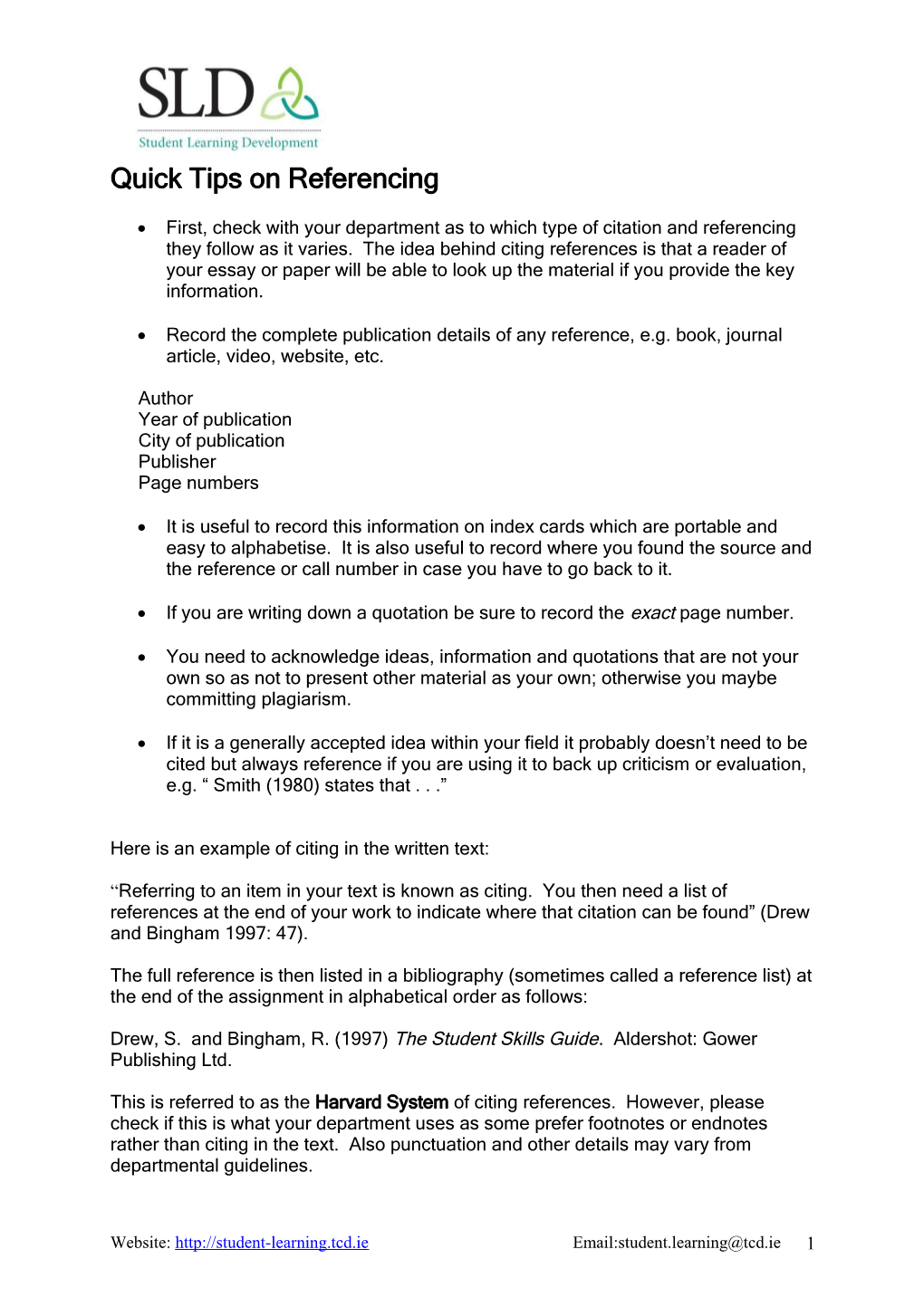Quick Tips on Referencing
· First, check with your department as to which type of citation and referencing they follow as it varies. The idea behind citing references is that a reader of your essay or paper will be able to look up the material if you provide the key information.
· Record the complete publication details of any reference, e.g. book, journal article, video, website, etc.
Author
Year of publication
City of publication
Publisher
Page numbers
· It is useful to record this information on index cards which are portable and easy to alphabetise. It is also useful to record where you found the source and the reference or call number in case you have to go back to it.
· If you are writing down a quotation be sure to record the exact page number.
· You need to acknowledge ideas, information and quotations that are not your own so as not to present other material as your own; otherwise you maybe committing plagiarism.
· If it is a generally accepted idea within your field it probably doesn’t need to be cited but always reference if you are using it to back up criticism or evaluation, e.g. “ Smith (1980) states that . . .”
Here is an example of citing in the written text:
“Referring to an item in your text is known as citing. You then need a list of references at the end of your work to indicate where that citation can be found” (Drew and Bingham 1997: 47).
The full reference is then listed in a bibliography (sometimes called a reference list) at the end of the assignment in alphabetical order as follows:
Drew, S. and Bingham, R. (1997) The Student Skills Guide. Aldershot: Gower Publishing Ltd.
This is referred to as the Harvard System of citing references. However, please check if this is what your department uses as some prefer footnotes or endnotes rather than citing in the text. Also punctuation and other details may vary from departmental guidelines.
The above was a reference from a book. Here is one from a chapter in a book:
Weinstein, C.E., Husman, J. & Dierking, D.R. (2000) “Self-regulation interventions with a focus on learning strategies.” In Handbook of Self-regulation. M. Boekaerts, P.R. Pintrich & M. Zeidner (eds.) San Diego: Academic Press: 727-747.
Here is an article in a periodical:
Simpson, M.L., Hynd, C.R., Nist, S.L. & Burrell, K.I. (1997) “College academic assistance programs and practices.” Educational Psychology Review 9 39-87.
Example of a www page:
Holland, M. (2002) Guide to citing internet resources [online]. Available from <http://www.bournemouth.ac.uk/library/using/guide_to_citing_internet_sourc.html> [Accessed 6 December 2003]
For a full selection of examples please visit:
http://www.cite.auckland.ac.nz/
http://library.cant.ac.uk/citing-references.htm
http://www.unisanet.unisa.edu.au/learningconnection/student/studying/referencing.asp (Also examples of APA and others)
http://www.coventry.ac.uk/caw and follow the ‘Harvard Style’ links
Or ask your tutor or lecturer for further information on referencing.
2
Website: http://student-learning.tcd.ie Email:
